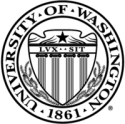Rural Community Broadband Network in Minnesota Garners More Coverage
Minnesota Public Radio has once again covered some of the many benefits coming from the stimulus-funded Southwest Minnesota Broadband Services that grew out of WindomNet, a small muni network. It is now offering some of the fastest connections in the region to people who previously only had dial-up or slow DSL.
Schensted and his wife are the first in their southwest Minnesota community to connect to a new high-speed Internet service. He said the new service is everything it was advertised to be. "We're getting anywhere from 50 megabits downloading and about 20 to 30 uploading," Schensted said. "It's just really incredibly fast."Stimulus dollars spent on expanding publicly owned networks gets the most bang for the taxpayer's buck and should have been a much larger focus for the broadband stimulus. The people and businesses served by this network have faster connections at lower prices than we can get in the metro area of Minneapolis/St Paul.
Schensted's house is connected to the nearly $13 million Southwest Minnesota Broadband Service project that will serve eight communities: Bingham Lake, Brewster, Heron Lake, Jackson, Lakefield, Okabena, Round Lake and Wilder. Internet equipment Schensted said he has never had that kind of Internet speed, even when he lived in the Twin Cities. "This is perhaps overkill for even my home," he said. "I'm not complaining about it, but it's a wonderful overkill. My wife and I can both be using a computer, we can be streaming something on the television, all at the same time which is something we wouldn't have dreamed of before."Smart public investments can connect everyone in this state, at a fraction of the price that it would cost to subsidize the big private companies to do it. They are too inefficient and require too large a margin of profit, in addition to a host of other problems.




